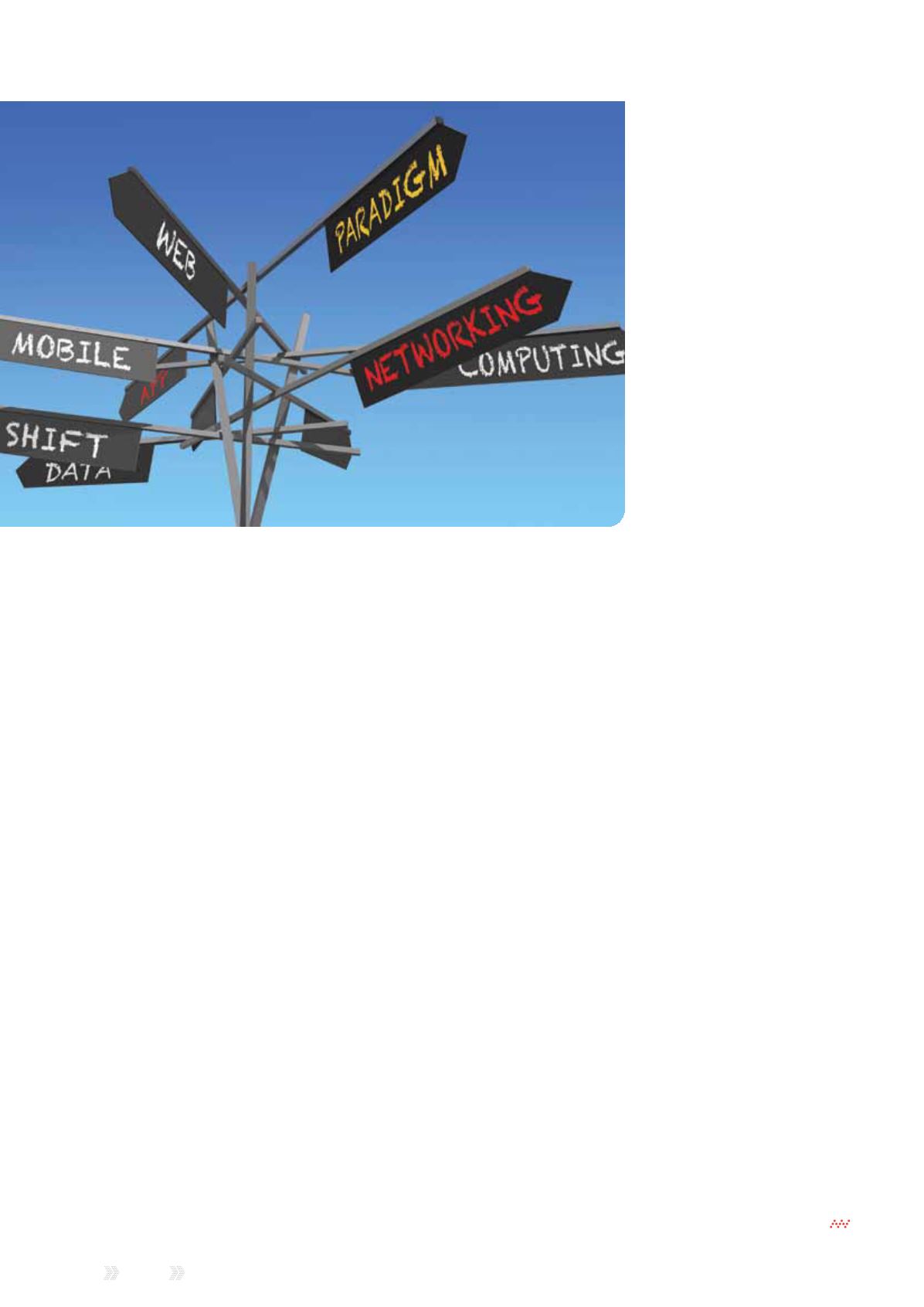
22
|
Reach
Issue 8 2015
can be used for surveillance,
maintenance reporting,
retrieval of equipment and
many other functions in hostile,
or simply remote, locations.
Additional requirements:
regulation to ensure safety of
driverless vehicles in complex
environments with unpredictable
human drivers and pedestrians.
»
»
Drone surveillance:
Self-
navigating, airborne vehicles
form wireless meshes overhead
with gateway drones as the flying
interface with the LTE ground
cell. These Unmanned Aerial
Vehicles (UAVs) can be quickly be
despatched to incident locations
to reconnoitre the situation.
Additional requirements:
Ultra-
reliable and safe UAVs are needed
for non-military use in public
spaces. Changes in regulation of
air space needed to permit low-
altitude autonomous flight.
»
»
Facial recognition:
Big data
analytic techniques process
unstructured data such as video
and photos to perform real-time
look ups of individuals. Combined
with AR, the technology can
be used to locate suspects in a
crowd, or key workers at a site.
Staff wearing glass-like headsets
can view markers and summary
information about individuals
overlaid on their physical location.
Additional requirements:
Accurate
recognition can be difficult
depending on line of sight and
viewing angles. Technology
and algorithms are constantly
improving due to keen interest from
the military, among other investors.
»
»
Intelligence in the field:
Evidence
collection from body-worn
cameras and microphones, gun-
sight cameras, permanent and
temporarily-sited sensors, even
robotics. Distribution of information
among personnel in the field,
including video, photos, maps,
briefing info, engineering drawings,
and workflow management. 3D
printing opens up the possibility
of local manufacture of equipment
and parts.
Additional requirements:
devices will become increasingly
‘context aware’, responding
according to the profile of the
individual user, local conditions and
other sensors in the vicinity, and
the status of ongoing incidents.
Mobile operators must be able
to allocate dynamic upload and
download bandwidth as needed.
Some of these ideas may seem
futuristic in the context of the typical
daily operations of a rural police force
or fire service struggling with budget
cuts. But it’s worth keeping in mind
that the drive for innovation is fuelled
by fierce competition in the global
consumer market.
Samsung, Apple and Google are
among the biggest research and
development investors outside of the
military. Apple, in partnership with IBM,
has overhauled its enterprise strategy
recently and is actively targeting vertical
sectors for growth. Exciting new
devices – including flying ones – are
sure to emerge in the coming years,
with designs well beyond the familiar
smartphone form factor.
The technology is, in fact, less of a
challenge than the regulatory overhaul
required. Society needs to be ready
for these new ways of protecting the
public and property. One consequence
of the affordability of new technologies
is that hostile elements will also
have access to them. The critical
communications community will need
appropriate regulatory support if it is to
stay ahead.
New operational paradigm
As long as critical communications
can stay aligned with international
standards, and avoid branching
off into proprietary solutions,
customers can benefit from the
most exciting breakthroughs in
mobile broadband. Nonetheless,
several important foundations
need to be in place. Common to
all the above is the need to build
an ecosystem of developers who
understand the specialist needs of
this demanding market. Vendors
then have a lucrative opportunity
to manage and host applications,
provide end-to-end security and
interoperable solutions.
The onus also falls on customers
to integrate mobile into daily
operations and their existing
software systems, from the control
room to the street or substation.
Predictive analytics will take a
greater role in operational decisions.
Otherwise it would be impossible to
find meaningful patterns in streams
of real-time and unstructured data
that could overwhelm an individual
or incident response team.
Mobile broadband is not just about
gadgets – it’s a new operational
paradigm. It will certainly challenge
existing ways of working, as has
social media for better or worse. But
the benefits will be substantial in the
longer term as staff are freed up to use
their expertise more effectively.
Mobile broadband is not just about
gadgets – it’s a new operational paradigm


